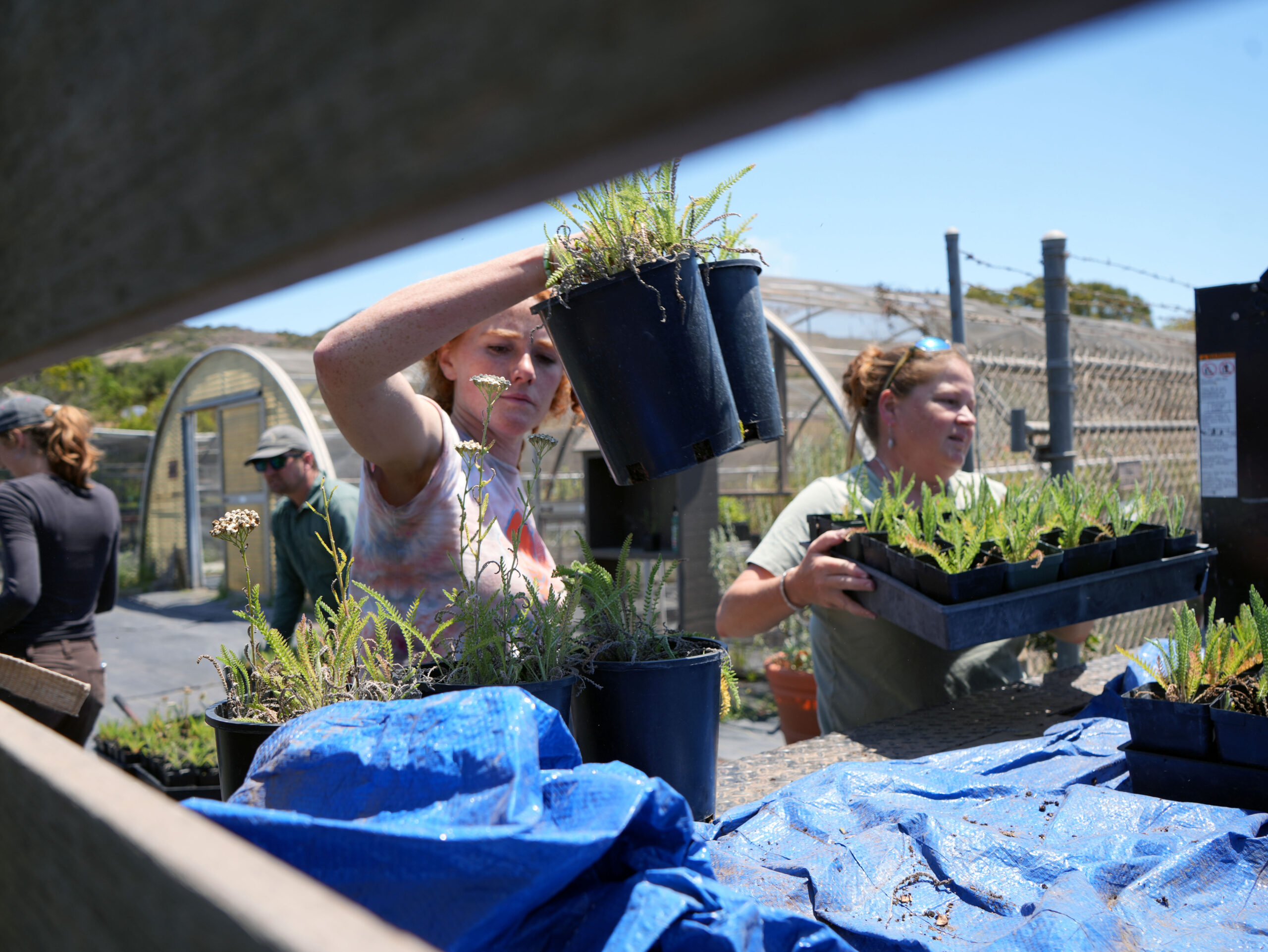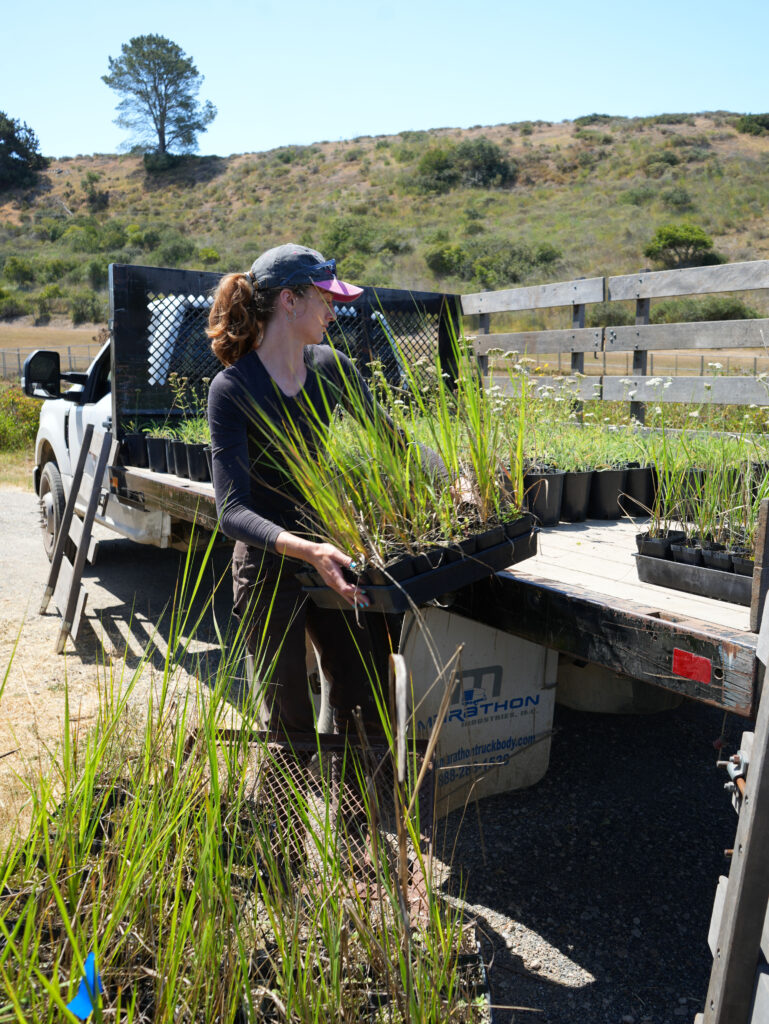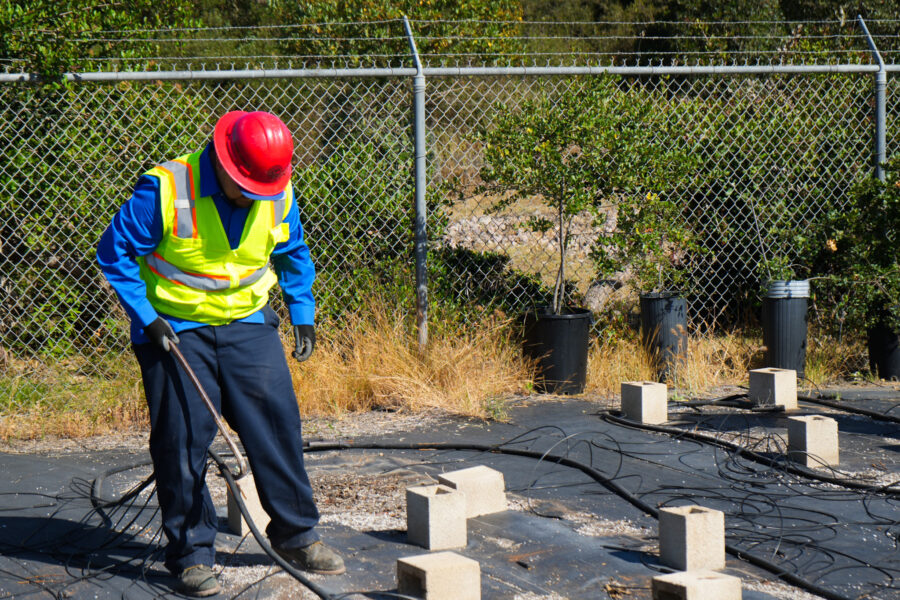
Conservation is essential to the longevity of Catalina Island and soon, a new generation will be introduced to the native plants that shape and protect the place they call home.
In early June, thousands of native plants grown at the Catalina Island Conservancy’s Ackerman Native Plant Nursery were delivered to Avalon School. It’s part of a multi-organization collaboration initiated nearly five years ago to bring the vegetation to the school’s new sports plex.
“This is one of the most amazing and rewarding aspects of the Ackerman Nursery,” said Kevin Alison, Catalina Island Conservancy Native Plant Manager. “What we need is the younger generations we have now and into the future, multiple generations down the line, to be able to enjoy these rare and endemic plants of Catalina that we’re trying to preserve.”

Among the 10,693 plants delivered to the school are island oak (Quercus tomentella), felt leaf ceanothus (Ceanothus arboreus), scarlet monkeyflower (Erythranthe cardinalis), milk weed (Asclepias fascicularis) and yarrow (Achillea millefolium). Some of the plants only grow on islands and are essential to the biodiversity and fire resistance of Catalina. The nursery grows over 85 species and houses over 3,000 seed collections representing 243 species. It is also focused on growing plants that attract pollinators.
“Even as we were loading the trucks, you might see a native pollinator, a bee – not a European honeybee, but a native bee – come up to the plants,” said Alison. “There were also saw flies and butterflies. One of the plants on here are seedlings from the rarest tree in North America, the Catalina Island mountain mahogany (Cercocarpus traskiae), which occurs on the back side of the Island.”

Catalina mountain mahogany is an endangered plant species found nowhere else in the world but Catalina Island. Browsing pressure by herbivores like invasive mule deer, and livestock in the past, have resulted in a dramatic decline in this rare plant. New plants can take several years to reach maturity and start reproducing. The Catalina mountain mahogany is not a consistent annual seed maker.
“Some of our bigger trees have been growing years and years, so 10 years is probably the longest we’ve had our manzanitas or oak trees growing,” said Lexy Coons, a native plant ACE technician at the nursery. “We’re also giving them some little baby grasses that are pretty fresh.”

Community partnerships included Avalon School, Long Beach Unified School District, 2H Construction and Marina Landscape, as well as countless volunteers.
“Sometimes they come out and have no clue what they’re getting into,” Coons said of the volunteers. “But they get their hands dirty in the soil. We worked with a lot of people in the community doing plantings. I think it made a big impact for people to see the plants they helped grow, installing them in the ground out in the landscape, it means a lot.”
Introducing the Island’s youngest residents to native plants not only inspires curiosity but develops future stewards of the land.

Part of the project is having this educational aspect to it, to not only learn about the plants but to see the interactions they have with the wildlife around them – the birds, pollinators, foxes,” said Allison. “A lot of the kids are native to this island and grew up here. They can experience a plant that’s just like them and maybe want to take care of it and their growth and survival into the future.”
The plants are expected to be planted at the school by August.


